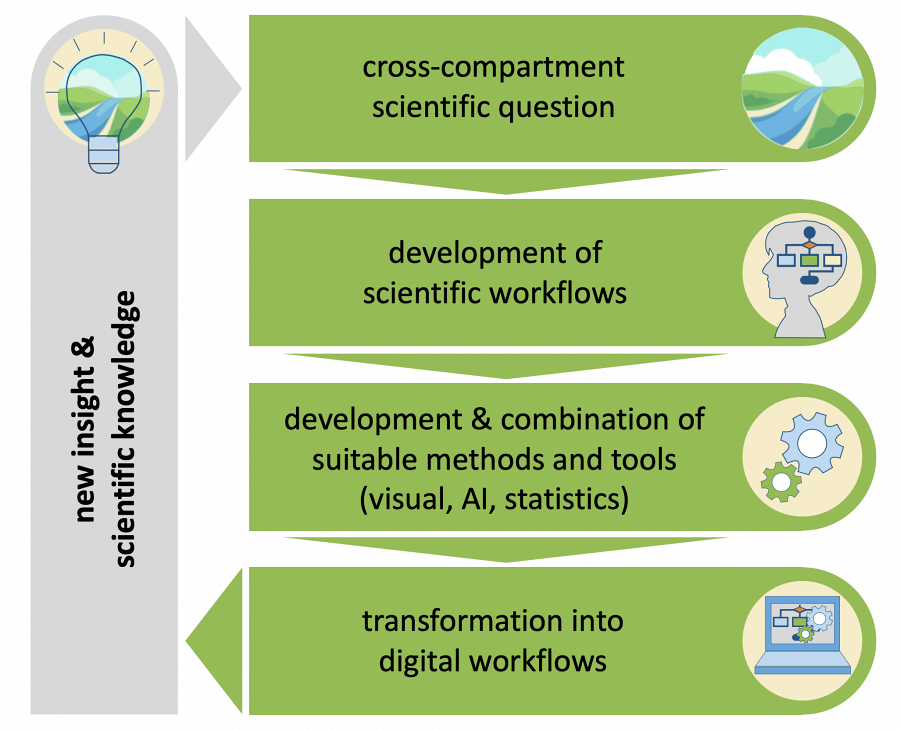
How We Reach What We Aim For
Our approach to implement integrated data-driven science is thinking in workflows. Workflows are suitable means to enable border crossings. On a conceptual level they can link perspectives of different disciplines in scientific workflows (value creation chain); on the operational level they can link data and data processing methods in seamless digital workflows.

Developing Software and Workflows for Integrated Data-Driven Science
In Digital Earth we develop both workflow components (software components) and workflows to improve integrated data-driven science. The software components are methods and tools to preprocess, explore, analyze and visualize data. The workflows are descriptions of procedures to fulfill a scientific task, such as identifying the best place and time for monitoring, or identifying a river plume in the sea, or assessing hydro-meteorological controls of flood events*. On the conceptual level they describe the methodical approach how to solve a scientific problem and answer a scientific question; on the operational level they describe the concrete chain of methods executed in the digital workflow. To realize the workflow approach of Digital Earth we developed a component-based software concept; it is the basis for the implementation of all Digital Earth workflow components. Our developments are based on show cases and several secondary application cases .
Some of the secondary applications are:
- Creation of Surrogate Models for Reactive Transport Simulations
- Deep Sea Mining Impact: Sediment plume tracking in the North Sea
- Munition finding in the North Sea
- The Digital Earth approach to implement integrated data-driven science at a glance.
*Please note: The workflow approach in Digital Earth is focusing on the aspect of linking concepts, data and methods. Scientific workflow systems such as Keppler or Taverna are not the purpose of Digital Earth.